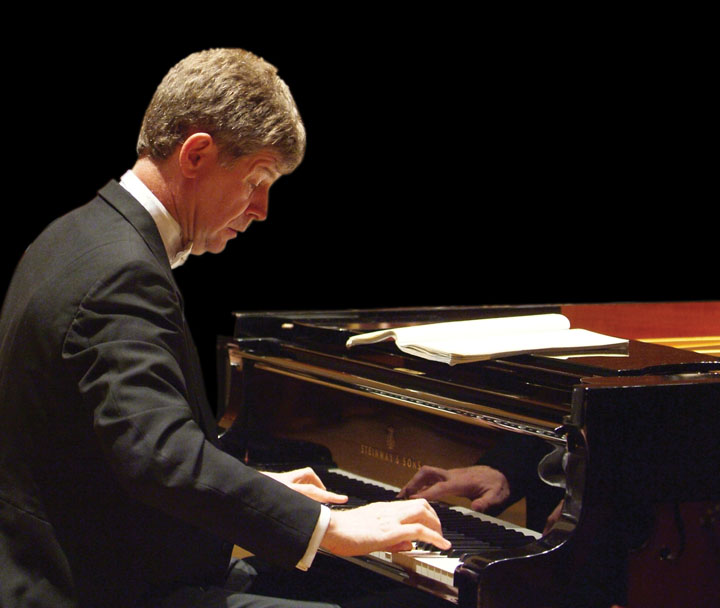Hobson’s relentless keyboard display leads to some battle fatigue
Pianist Ian Hobson is nothing if not ambitious. In six concerts this season—under the umbrella of “Preludes, Etudes, and Variations—Downtown/Uptown”—Hobson is tackling some of the most difficult solo piano repertoire—complete sets of preludes and etudes by Chopin, Rachmaninoff, and Debussy—and adroitly weaving in the occasional relative newcomer: Stephen Taylor (b. 1965), Robert Chumbley (b. 1954), and on March 23, the world premiere of Preludes by Yehudi Wyner (b. 1929). The “downtown” concerts were presented at SubCulture, with the “uptown” programs at Merkin Concert Hall.
When Chopin was just 17 years old, he unleashed Variations on “Là ci darem la mano,” Op. 2, based on the famous duet in Mozart’s Don Giovanni. It is a startling initial calling card, which takes Mozart’s simple melody to create a florid, stylish set of variations of great ingenuity. Hobson’s firm touch and decisive phrasing made one wonder why this doesn’t appear in the concert hall more often.
In the second book of Debussy’s Préludes, Hobson turned what could have been a mere exhausting stunt into a reflection on composers who followed. It is no surprise that György Ligeti studied Debussy’s work, and one could easily envision that “Brouillards” and “Feux d’Artifice” (the first and last preludes) would seize the younger composer’s imagination with their close intervals and harmonic ambiguity. (In keeping with Hobson’s theme, he might be superb in the 36 variations of Frederic Rzewski’s The People United Will Never Be Defeated!)
Hobson summoned up impressive reserves of technique over the span of Debussy’s twelve pieces, showing a particular affinity for the sinister, Spanish-tinged “La Puerta del Vino,” and the jaunty strut of “Général Lavine—eccentric.” At times, especially in the more delicate “Feuilles Mortes” and the shadowy “Canope,” one longed for a bit less pedal, which tended to make some of the heady climaxes a bit blurred and monolithic.
Completed in 1917, Rachmaninoff’s Études-Tableaux, Op. 39, were his last works written in Russia before he emigrated to the West, and show heavy influence by Scriabin. Hobson was fearless in these keyboard totems, with the most successful of the set those that reveled in thundering difficulty. No. 5 in E-flat minor was as broad and grandly scaled as it should be, and the Sixth, which Respighi called “Little Red Riding-Hood,” has relentlessly ascending scales ending in three gruff, barbaric chords. And for the finale, No. 9 in D major, Hobson found fire to ensure that Rachmaninoff’s little march generated maximum heat.
Though Hobson was impressive throughout the set—and played the entire program from memory—one felt somewhat pummeled at the conclusion, perhaps partially due to the excess of treats. But pedaling was a recurring issue, and the palette chosen by Hobson might have benefited from fewer brilliant colors, and more subtle ones. The pianist clearly has an outsized technique and can produce a brain-crunching texture when called for. But that massive sound can produce a slight fatigue nonstop, and perhaps the enthusiastic but polite applause at the end indicated that others felt similarly.
As an encore, Hobson offered Rachmaninoff’s classic, ecstatically showy version of Fritz Kreisler’s “Liebesfreud.”
Ian Hobson continues his series “Preludes, Etudes, and Variations—Downtown/Uptown” with two concerts at Merkin Concert Hall on March 23 and April 13. ianhobsondowntownuptown.com
